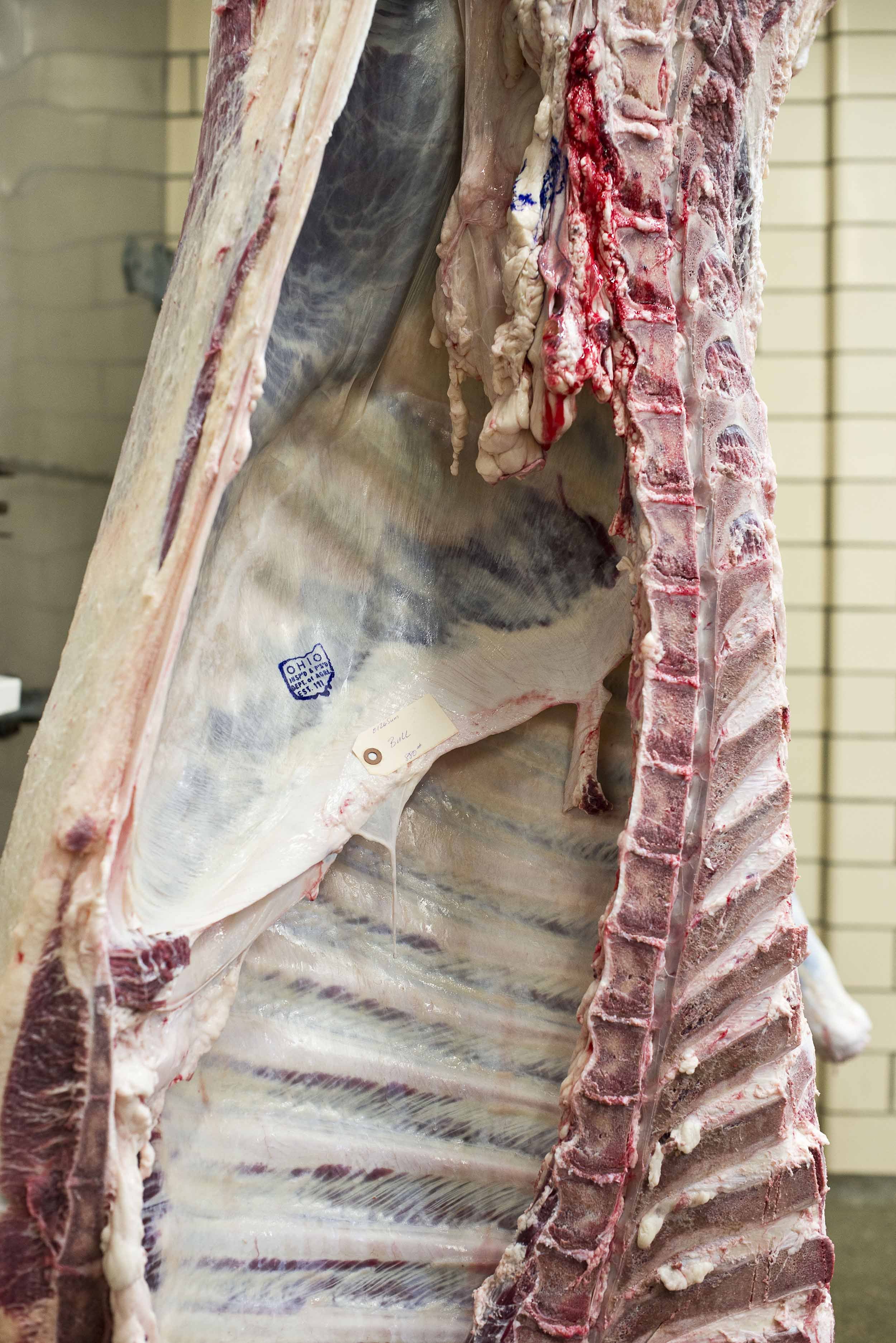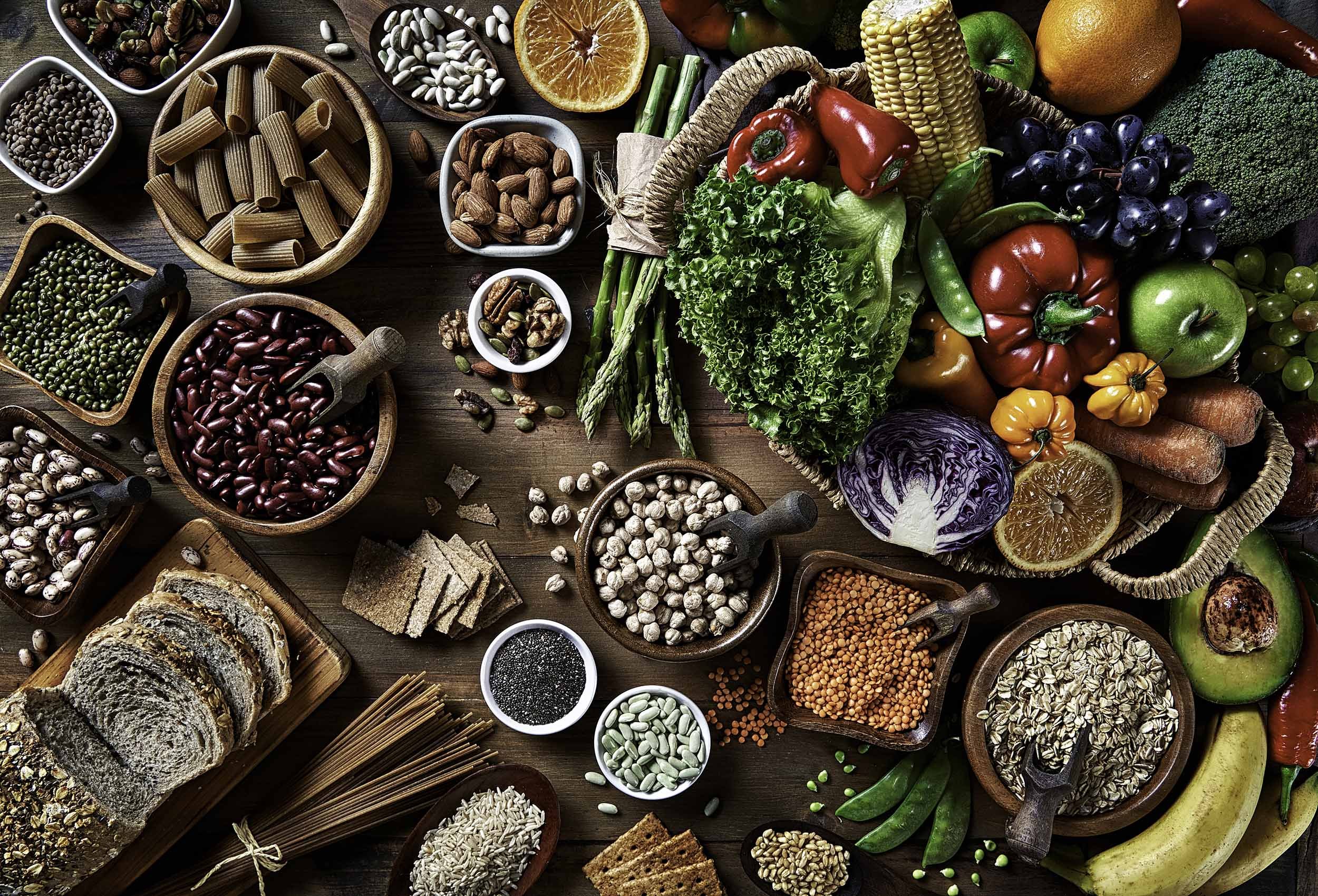You Feel What You Eat

A growing body of science connects the gut, with its vast microbiome, to the brain, with its regulation of mood and mental function.
words Hannah Purnell / photo illustrations Michael Tittel
The connection between diet and physical health has been apparent since before Hippocrates was credited with saying, “Let food be thy medicine.” But when it comes to how food impacts our mental health, things get a little murkier.
For a long time, eating disorders have dominated conversations around diet and mental health. Everything else is relegated to so-called “poor choices”; we can usually connect our ill-advised fourth cup of coffee or skillet-sized chocolate chip cookie to the resulting jitters and stomach aches. But it’s tougher to spot when the foods we eat start to mess with sleep, digestion, and ultimately, mental wellbeing.
Food is a tricky topic in a world that moves at breakneck speed and where convenience is king. We’re quick to attach moral labels to food (i.e., eating “bad” food makes you a “bad” person), further complicating our perceptions and enabling a chaotic, never-ending internal dialog:
Ugh. Why did I eat that?
Why is it so hard for me to lose weight?
Why do I have such a foggy brain in the afternoon?
Where am I supposed to find time to cook healthy food?
Can someone please just tell me what to eat?
Let’s face it: Unless you’re Gwyneth Paltrow, you probably don’t have a team of food scientists and health gurus on hand to tackle these tough questions. (If you are Gwyneth Paltrow, holy smokes, thanks for your readership! You should definitely come check out Findlay Market.) The rest of us have to get a little more in-the-know with food choices that relate to mental health.
GETTING TO THE ROOT OF PHYSICAL & MENTAL HEALTH
Fortunately for us, there are qualified professionals like Dr. Lauri Erway Nandyal at the University of Cincinnati Department of Family and Community Medicine. Like all nutrition scientists, she focuses on helping patients find the root cause of their ailments and make smart dietary choices to support that overall health.
That can be challenging in a university setting, where many of Dr. Nandyal’s college-age patients have yet to experience the physical symptoms of poor diet that more often accompany advanced age. But their youth doesn’t protect them from other issues.
“Anxiety and depression are most often what brings people in to see me and prompts a conversation,” Dr. Nandyal says. “I typically start by asking simple questions about their sleep and movement, eventually dialing into the gastrointestinal tract. Very often there will be an overlap in the form of bloating, infrequent or excessive bowel movements, indigestion, and heartburn, that elicits deeper conversations about caffeine intake, dietary restrictions, and macros.”
The seven types of macros—or macronutrients—are carbohydrates, proteins, fats, vitamins, minerals, fiber, and water. Dr. Nandyal uses analogies to help patients understand why the brain, which comprises 80% fat, will produce a response to macronutrient deprivation.
If we look at managing our diet like maintaining a campfire, metabolism would be the flame. As we feed it, different materials burn at different rates—whether that’s a matchstick (sugar), a piece of cardboard (fiber), or a log (natural foods containing fiber and very little sugar). The key to an efficient fire is feeding it the right materials at regular intervals. Too many logs will suffocate the flame, and those insubstantial matchsticks will burn up as fast as you can put them down, ultimately extinguishing your fire altogether.
Nandyal likens the brain’s flash-and-burn sugar response to swerving quickly to avoid danger while driving. “All the alarm bells start ringing,” she says. “You sweat, your heart pounds, you might even have to pull over and take a minute to relax. As we accelerate intake of refined sugars, our young, healthy insulin kicks in to help and then quickly bottoms out, leaving us tired, anxious, and susceptible [to repeating the cycle]. Over time, we lose the ability to respond as well, which leads to a lot of problems.”
What she’s describing is a condition known as insulin resistance or metabolic syndrome, which includes conditions like obesity, high blood pressure, high cholesterol, and Type 2 diabetes. A number of genetic and lifestyle factors can contribute to insulin resistance, and it may afflict as many as one in three Americans. In a nutshell, when cells in our muscles, fat, and liver stop responding well to the insulin they need for energy, it triggers our pancreas to make more, causing our blood sugar levels to rise over time.
THE GUT-BRAIN CONNECTION
That’s a scary prospect for many, but Dr. Nandyal says preventing, and even reversing, insulin resistance is not as lengthy or intimidating a process as many people assume. Many of her patients who commit to making even small changes in their diet tend to see results after days or weeks—not months or years.
“The human gut is a very dynamic place that turns over about every seven days,” she says. “Adding a salad two or three times per week, cooking more at home, getting more whole foods, you’re going to see results fairly quickly.”
There’s a growing body of science pointing to the human gut—home to 100 trillion microorganisms—as a major driver of health. Importantly, there’s a direct link between the gut and the brain. The gut-brain axis is basically a communication network that works via the central nervous system, nerves in the GI tract, and a collection of hormone-secreting glands. Together, the brain and the gut regulate physical function, like digestion, as well as our mental and emotional state. (See sidebar.)
Those patients who are interested in “biohacking” their food-mood connection can undergo basic bloodwork to measure things like vitamin levels and liver function. Nandyal uses those metrics to help patients create a plan, often with manageable first steps like scaling back caffeine and adding fruits and nuts to daily meals.
“I’d love to be able to go shopping with each patient and look at their budget together, but it really doesn’t have to be as comprehensive as that,” she says. “Instead, it’s often little bits and pieces that open the door to a better mindset around food and mental health.”
THE PHYSICAL & EMOTIONAL ASPECTS OF EATING
Conversations about diet and mental health are especially fraught because food and eating are loaded with psychological, cultural, and familial baggage. What we eat not only has a direct chemical influence on the brain; it can also trigger emotions like pleasure and happiness or guilt and shame.
That’s the focus of Dr. Anna Guerdjikova’s work with the Harold C. Schott Eating Disorders program at Lindner Center of HOPE in Mason, OH. She helps patients transform their eating habits by changing their perceptions around food and body image.
“There are no bad foods, and drastic changes usually do not work,” says Dr. Guerdjikova. “Eating is a very complex behavior, and ‘poor diet’ is a general term that does not actually mean much, especially given our differences in culture, climate, and resources.”
The food-mood connection gets even more complex. Dr. Guerdjikova says labeling foods as “bad” perpetuates feelings of failure and hopelessness, making it easier to give up and just eat whatever we want. “Once we tell ourselves, ‘cookies are bad,’ it’s all we think about,” she says. “So restrictions often are the gateway to binge eating and other dysfunctional eating behavior.”
Another reason Dr. Guerdjikova cautions against obsessively labeling food as good or bad: It can dominate our thinking to an unhelpful degree. (Think: food-tracking apps that throw confetti when you achieve your calorie goal … even though you don’t feel satisfied.) In this way, the notion that you’ll be healthy forever if you eat only fruits and vegetables can be just as counterproductive as packing our diet with so-called junk food.
FEEDING THE BODY & MIND
Instead, she says, moderation, flexibility, and variety are the pillars of overall good mental health, and this relates to food as well. For example, we can achieve more by adding colorful foods like fruit and eggs to our breakfast routine than we can by eliminating bagels and sugary cereals altogether. By expanding our options this way, we unlock a sense of adventure and curiosity around food, which Dr. Guerdjikova believes has the power to elevate our energy, self-esteem, and even our social scene.
“Food and eating are about nourishment, socializing, being connected with others, and fueling the body and the soul,” she says. “Many people often bond over the idea of ‘I need to lose weight’ or ‘I am not eating well.’”
Talking about food and sharing food in community, she says, can do more than teach us new cooking skills; it can help change how we look at food and body diversity in the bigger picture, which leads to more self-esteem, more energy, and a generally more accepting worldview.
“Eating is one of the best forms of self-love and self-care,” she says. “Food is to be fun, pleasurable, energizing, appetizing, and provide us with proper fuel so we can live the life we envision. There are no good or bad foods, and there is no one way to be healthy. When we live with purpose and intention, we learn to treat our bodies well with nutrition and rest.”
The Wonky Science of the Gut-Brain Connection
Researchers are gaining more insight into the biological wiring that connects the brain to the gut. (If you’d like to geek out on the science, the National Institutes of Health’s online National Library of Medicine gut refers to the entire gastrointestinal tract, from the mouth to the, um, other end. When scientists talk about the “gut microbiome,” they’re referring primarily to the ecosystems of microorganisms that live in the stomach and intestines.
The gut is sometimes called “the second brain” because it encompasses the enteric nervous system. It, like the central nervous system (the brain and spinal cord), contains a network of nerves, neurons, and neurotransmitters that send signals to control bodily function.
These two nervous systems are connected by the gut-brain axis. It also includes the vagus nerve, which runs from the brain to the large intestine, and the hypothalamus, which controls the pituitary and adrenal glands that are responsible for essentials like sleep, hunger and thirst, body temperature, metabolism, stress response, and immune function.
Research shows that the gut microbiome “extensively and profoundly influences the gut-brain relationship” including mental state and emotional regulation. When we are nervous or fearful, we often feel it as “butterflies” in our stomach. The physical-mental health connection cuts both ways: For example, GI problems cause stress and anxiety, and stress and anxiety make GI problems worse.
Just as medical researchers and practitioners have embraced a healthy diet based on whole foods and probiotics to support the gut microbiome for physical well-being, the approach is gaining favor as a way to promote psychological health.
Note: Before making significant dietary changes, or to address physical or mental health concerns, please see your physician for guidance.
Hannah is a graduate of NKU's political science program and a freelance creative who writes extensively about development in Greater Cincinnati. She doesn't like to fly, but she loves to travel. Her favorite books are A Tree Grows in Brooklyn and Love in the Time of Cholera.






